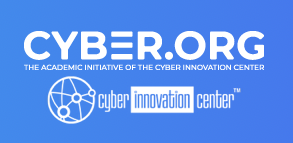Cybersecurity is more than just stopping hackers. Adding cybersecurity learning to classroom learning can help kids experience more practical hands-on learning and expose them to STEM careers they never dreamed of. A recently released benchmark report on the state of cybersecurity education in K-12 schools, shows that less than 50% of students in the U.S. have access to cybersecurity education today.
In an effort to make K-12 cybersecurity education accessible to all learners, CYBER.ORG has launched Project Access, a nationwide program designed to expand access to cybersecurity education for blind and vision impaired students between the ages of 13-21 who are in pre-employment transition (Pre-ETS). The Project Access program will introduce blind and vision impaired students to key cybersecurity topics, help them develop cybersecurity skills, and explore the possibility of a career in a growing industry.
Built off of the success of CYBER.ORG’s pilot program with Virginia’s Department for the Blind and Vision Impaired (DBVI), Project Access uses nonvisual techniques, is accessible to students who don’t have prior computer or technology experience and offers those with secondary disabilities hands-on learning opportunities and STEM career exploration.

Dr Chuck Gardner, the Associate Director of CYBER.ORG (a cybersecurity workforce development organization) shares why it’s vital for K-12 schools to get cybersecurity education in the hands of more teachers and students. The free resources available on CYBER.ORG are tailored to help any age student learn more about the challenges of cybersecurity.
Connect with CYBER.org:
- Website: CYBER.ORG
- Project Access: cyber.org/initiatives/project-access
- Twitter: @cyber_dot_org
Chris Woods is the host of the STEM Everyday Podcast… Connect with him:
- Website: dailystem.com
- Twitter/X: @dailystem
- Instagram: @dailystem
- YouTube: @dailystem
Get Chris’s book Daily STEM on Amazon
